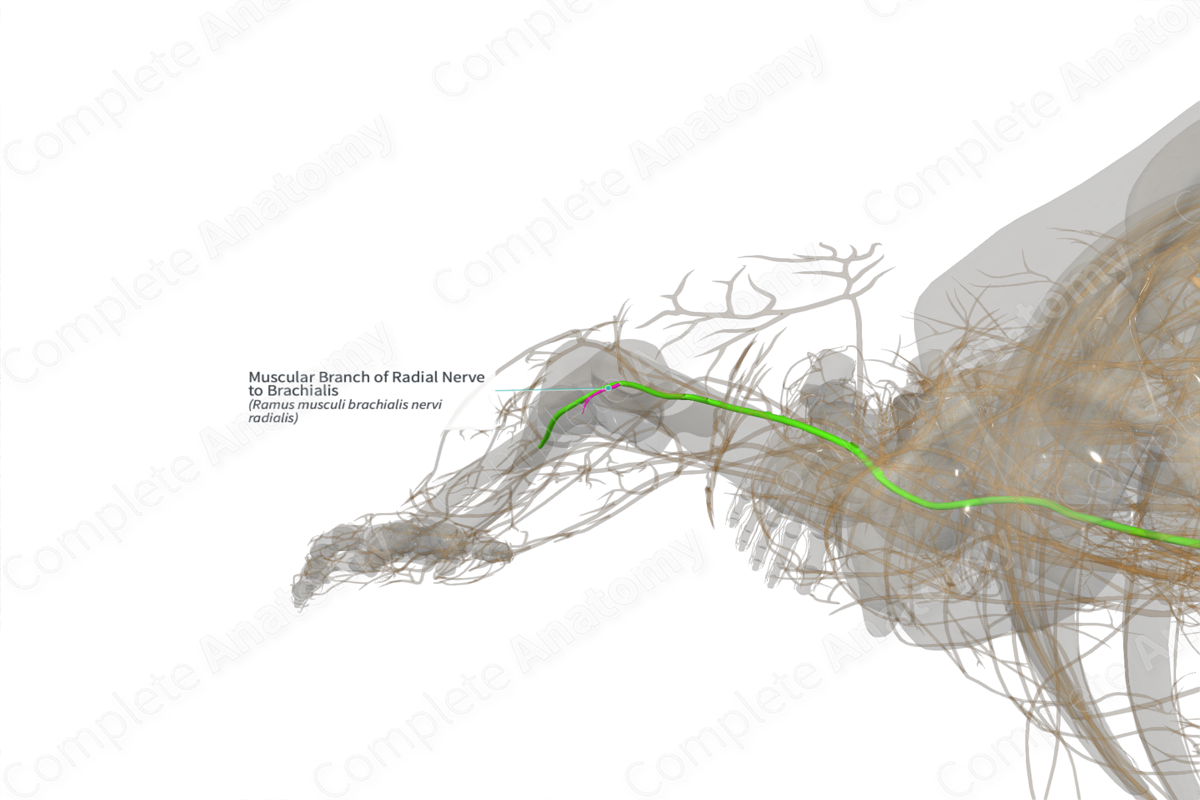
Muscular Branch of Radial Nerve to Brachialis (Left)
Ramus musculi brachialis nervi radialis
Read moreQuick Facts
Origin: Radial nerve (C7).
Course: Arises from the radial nerve as it descends inside the radial groove.
Branches: No named branches.
Supply: Brachialis muscle.
Related parts of the anatomy
Origin
A nerve to brachialis muscle originates from the radial nerve and contains motor nerve fibers from the seventh cervical spinal segment (C7).
Course
In the upper part of the arm, the radial nerve descends posterolaterally (with the profunda brachii vessels) through the lower triangular space, between the shaft of the humerus, long head of triceps brachii, and teres major muscles. The nerve then enters the radial groove along with the profunda brachii vessels. It descends downwards and laterally between the lateral and medial heads of the triceps muscle, while in contact with the humerus.
In the lower part of the arm, it pierces the lateral intermuscular septum and passes into the anterior compartment of the arm to reach the cubital fossa where it lies between the brachialis muscle medially and brachioradialis and extensor carpi radialis longus muscles laterally.
In the cubital fossa, a muscular branch of the radial nerve innervates a small lateral section of the brachialis muscle with fibers originating from C7. The remaining part of the muscle is innervated by the musculocutaneous nerve originating from C5-C6 spinal segments.
Branches
There are no named branches.
Supplied Structures
The muscular branch of the radial nerve to brachialis provides motor innervation to the brachialis muscle.




